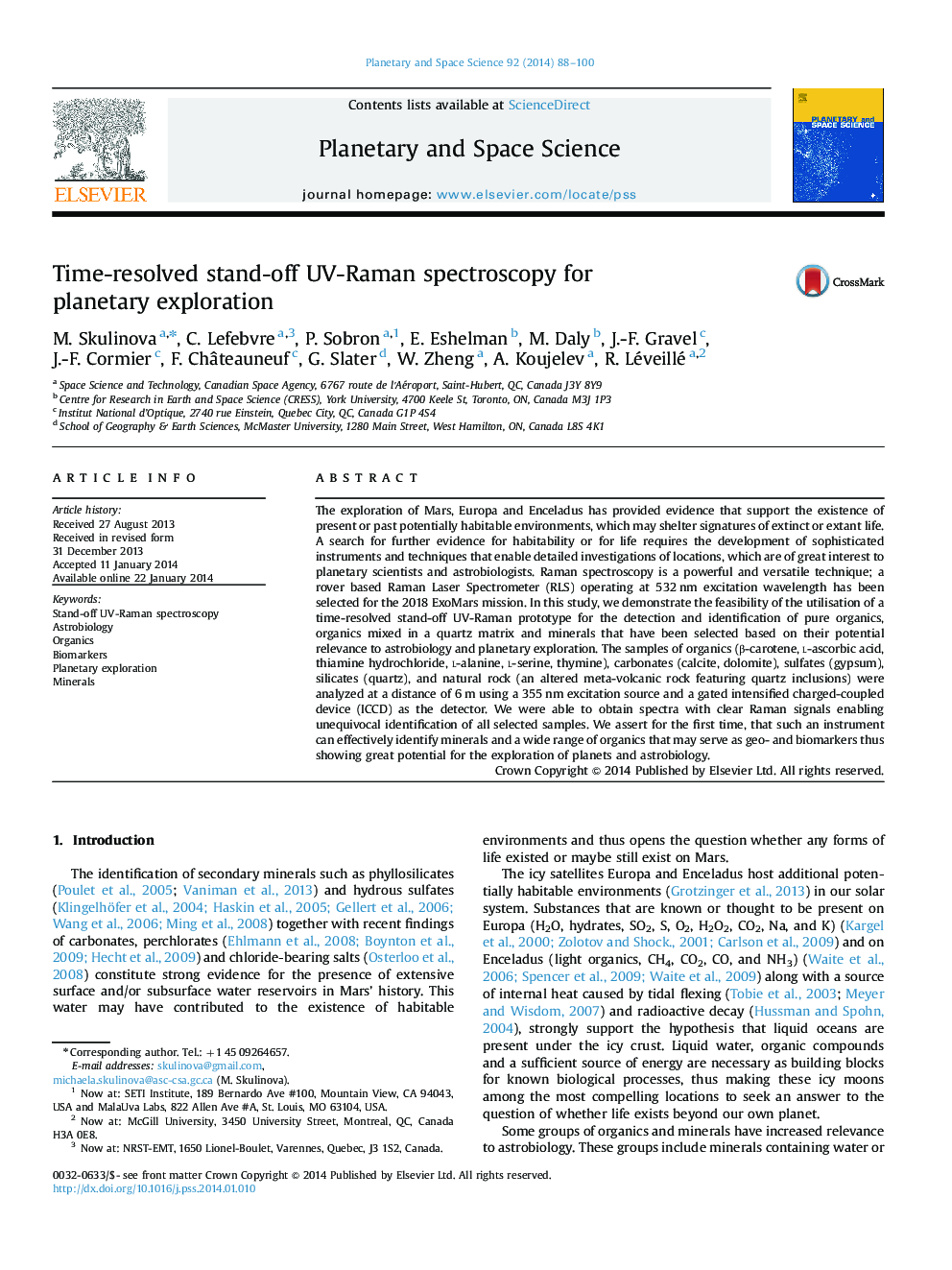| کد مقاله | کد نشریه | سال انتشار | مقاله انگلیسی | نسخه تمام متن |
|---|---|---|---|---|
| 1781167 | 1523944 | 2014 | 13 صفحه PDF | دانلود رایگان |

• We demonstrate an excellent potential of stand-off UV-Raman spectroscopy for astrobiology and planetary exploration.
• Our prototype is capable of the identification of both minerals and organics.
• All selected samples were unambiguously identified at distances on the order of 6 m.
• The gated detector is essential for improving signal-to-noise ratio of the Raman signal.
The exploration of Mars, Europa and Enceladus has provided evidence that support the existence of present or past potentially habitable environments, which may shelter signatures of extinct or extant life. A search for further evidence for habitability or for life requires the development of sophisticated instruments and techniques that enable detailed investigations of locations, which are of great interest to planetary scientists and astrobiologists. Raman spectroscopy is a powerful and versatile technique; a rover based Raman Laser Spectrometer (RLS) operating at 532 nm excitation wavelength has been selected for the 2018 ExoMars mission. In this study, we demonstrate the feasibility of the utilisation of a time-resolved stand-off UV-Raman prototype for the detection and identification of pure organics, organics mixed in a quartz matrix and minerals that have been selected based on their potential relevance to astrobiology and planetary exploration. The samples of organics (β-carotene, l-ascorbic acid, thiamine hydrochloride, l-alanine, l-serine, thymine), carbonates (calcite, dolomite), sulfates (gypsum), silicates (quartz), and natural rock (an altered meta-volcanic rock featuring quartz inclusions) were analyzed at a distance of 6 m using a 355 nm excitation source and a gated intensified charged-coupled device (ICCD) as the detector. We were able to obtain spectra with clear Raman signals enabling unequivocal identification of all selected samples. We assert for the first time, that such an instrument can effectively identify minerals and a wide range of organics that may serve as geo- and biomarkers thus showing great potential for the exploration of planets and astrobiology.
Journal: Planetary and Space Science - Volume 92, March 2014, Pages 88–100